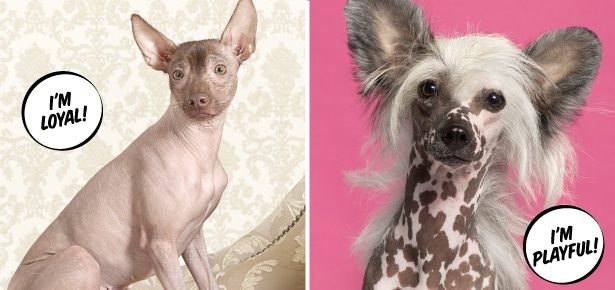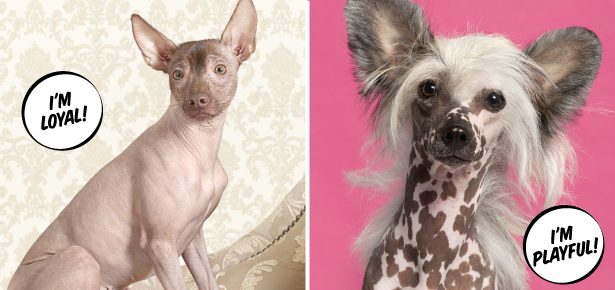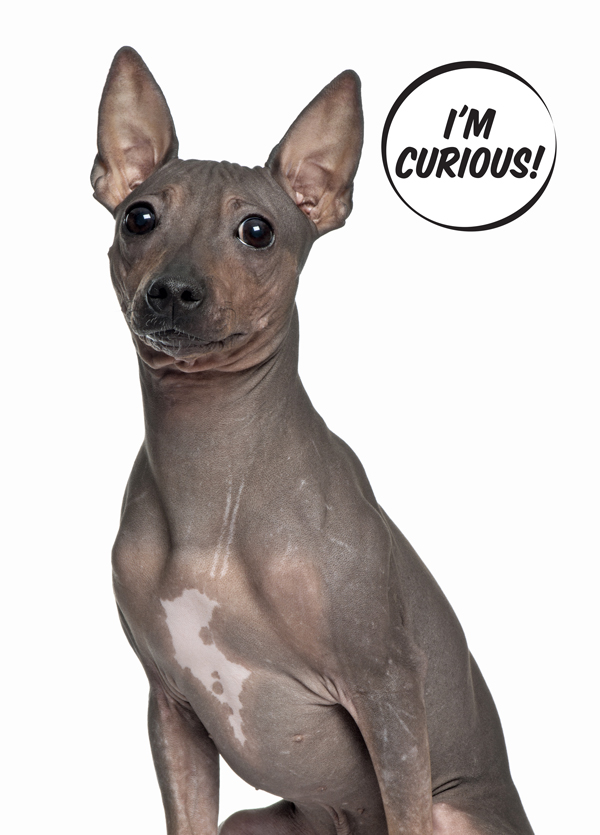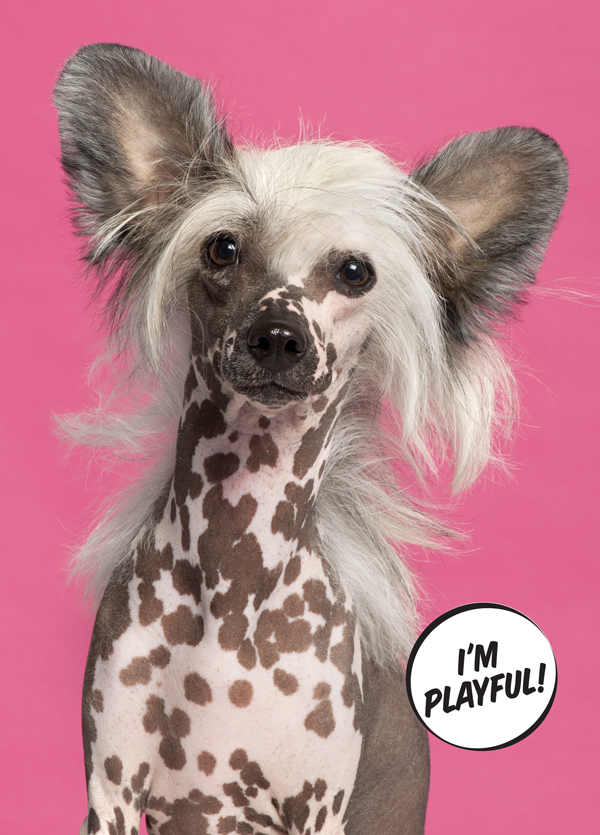

Find Your Breed Match
Is a Hairless Breed Right For You?
 Peruvian Inca Orchid
Peruvian Inca Orchid
Lively, alert, playful & charming
Agile, smart, and swift, the Peruvian Inca Orchid is an elegant sighthound that developed in Peru. Clues to the ancient history of the breed are found in pottery and textiles, with the breed’s first appearance in Moche pottery occurring in 750 AD. They were also depicted in Chimu, Chancay, and Incan pottery. The Chancay people used dogs as companions, and certain pottery even depicts them in sweaters while the Chimu considered them good luck and used the dogs’ warmth for treatment of arthritis and respiratory conditions.
The breed marries the appearance of speed and strength with refinement and can be hairless or coated, and comes in three sizes—small, medium, and large. Lively and alert, these dogs can be very good hunters and do well in lure coursing, rally, and agility. This loyal, noble, affectionate, and charming breed is well mannered around the house and loyal and loving to his family but reserved with strangers.
Is the Peruvian Inca Orchid right for you?
Find out more at: moderndogmagazine.com/breeds/Peruvian-Inca-Orchid
The Xoloitzcuintli
Loyal, alert, calm & trainable

Two varieties exist: coated, as well as the more popular “hairless” that is without fur save for a shock of hair on the top of its head. Like any good watchdog, they’re wary of strangers. Characterized as calm, tranquil, loyal, and attentive, these dogs range in size from 10 to 50 pounds, and are grouped into three categories: toy, miniature, and standard. Colours range from black, gray-black, and slate to red, liver or bronze.
Is the Xoloitzcuintli right for you?
Find out more at: moderndogmagazine.com/breeds/Xoloitzcuintli
American Hairless Terrier
Friendly, loveable & inquisitive
Energetic, alert, and curious, the American Hairless Terrier is an active, small to medium-sized terrier. This affectionate, playful dog tends to be fearless and feisty. They are relatively easy to train and tend to get along with older, considerate children as well as other canines, cats, and other pets. The breed’s lack of fur makes the American Hairless Terrier a favourite of allergy sufferers.
The history of the American Hairless Terrier was identical to that of the Rat Terrier until the 1970s—the American Hairless is the result of a rare, major mutation that occurred in a litter of Rat Terriers in 1972. A completely hairless puppy was born into a litter of normal Rat Terriers in Louisiana. This puppy, named Josephine, so won over her adoptive family with her sweet nature and intelligence that they bred her, leading to the development of a new breed.
As the Rat Terrier breed's ancestors were bred to hunt rats and other vermin, today’s American Hairless retains a strong hunting instinct and is game for just about anything. This smart and curious breed excels at a variety of sports and activities. They also make good watchdogs as they bark at unfamiliar sounds.
Is the American Hairless Terrier right for you?
Find out more at: moderndogmagazine.com/breeds/American-Hairless-Terrier
The Chinese Crested
Lively, alert & affectionate
Atrue family dog, the Chinese Crested is a playful, elegant toy breed that loves human companionship. One litter can commonly produce two varieties: the Hairless, which features soft, silky hair on the head, tail, and feet, and the Powderpuff, covered in a soft, straight coat. Because it sheds little to no hair, the Crested is recommended for allergy-prone owners. The breed is thought to have evolved from African hairless dogs and to have sailed the high seas aboard Chinese ships during the plague, chosen for its hairless status and ability to hunt vermin. Its status was elevated by the breed’s appearance by the mid-19th century in European art and in American dog shows in the late 1800s. By the early 1900s, the breed had acquired a considerable following in the U.S. The burlesque entertainer Gypsy Rose Lee acquired a Crested in the 1950s and became an ardent breeder and enthusiast, helping to further popularize the breed. It’s interesting to note that eight of the last 12 World’s Ugliest Dog contest winners were Chinese Cresteds. With its champions and detractors, this breed may truly exemplify the saying “beauty is in the eye of the beholder.”
Is the Chinese Crested right for you?
Find out more at: moderndogmagazine.com/breeds/Chinese-Crested
Click here for more comprehensive breed profiles from the Airdale to the Yorkie!
Join the newsletter and never miss out on dog content again!
"*" indicates required fields
By clicking the arrow, you agree to our web Terms of Use and Privacy & Cookie Policy. Easy unsubscribe links are provided in every email.

